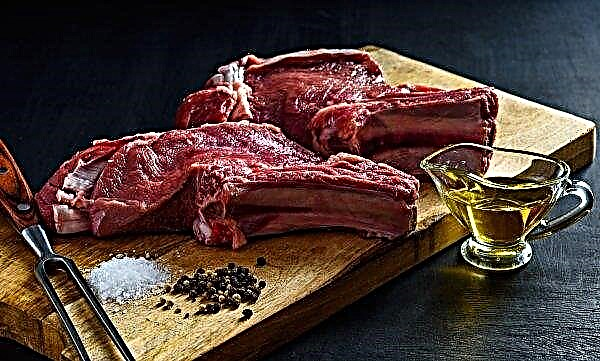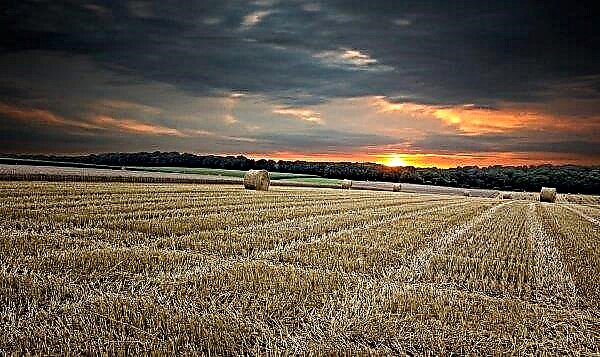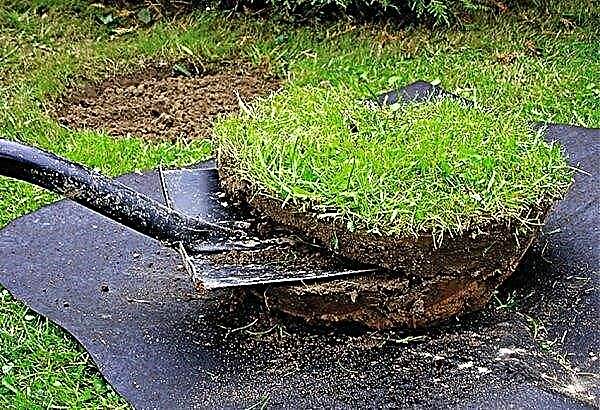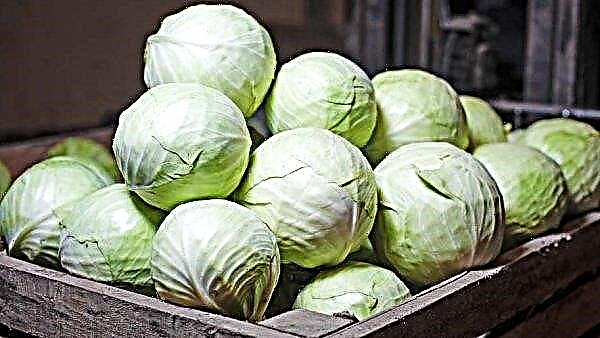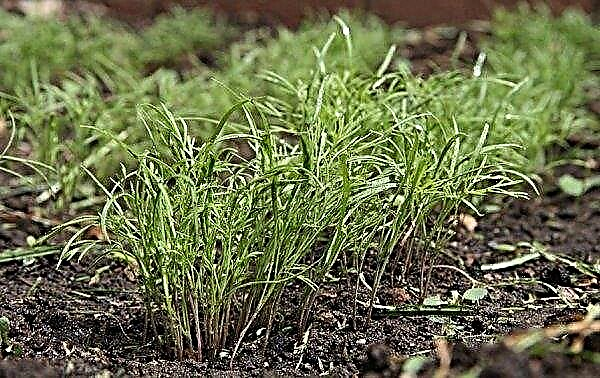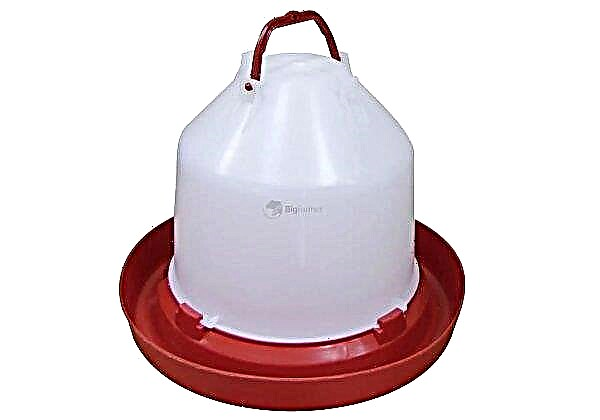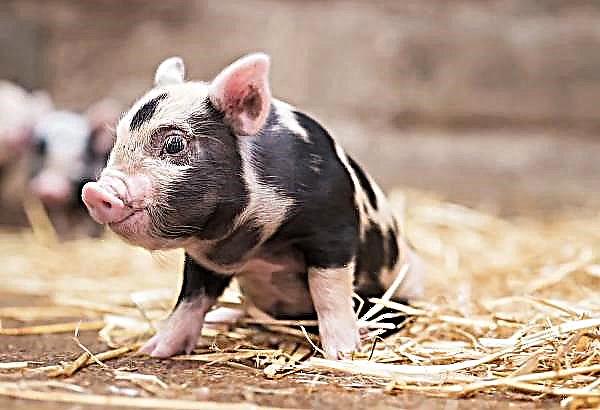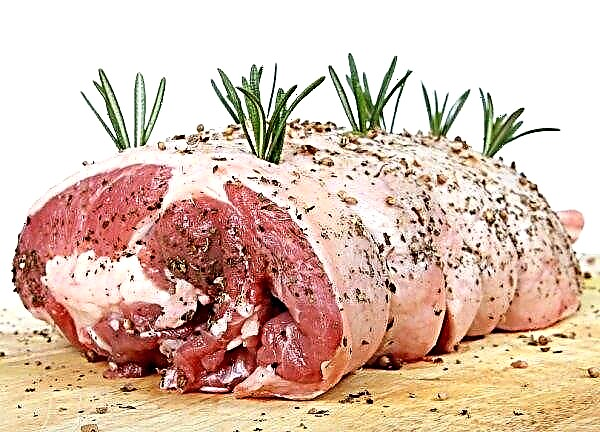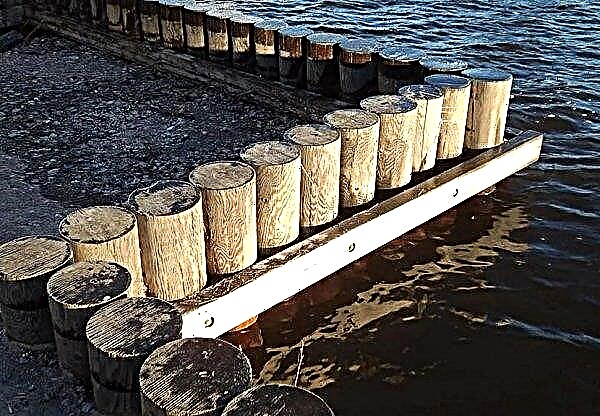Of particular interest to lovers of exoticism and collectors is a highly decorative dwarf shrub - the Korean fir Blue Emperor. Culture, due to its unpretentiousness in care and ease of cultivation, is successfully used in the field of landscape design to create various compositions. What are the features of plant cultivation and what is the agricultural technique of its care - find out from the article.
Botanical Description
The Korean fir Blue Emperor, the Latin name Abies koreana Blue Emperor, is a striking representative of evergreen dwarf perennial shrubs, whose height rarely exceeds 1.5 m. The plant is characterized by the presence of a pillow-shaped, irregular crown shape, up to 1.5 m in diameter. The Korean specimen is slow growing crops, annual growth of which varies from 5 to 8 cm.
A feature of fir is the color of its needles. It has a silver-violet or intensely blue color in the upper part and white in the lower. The needles are short, soft to the touch, when viewed closely resemble tiny leaves.
The shrub has excellent winter hardiness, can grow in the climatic conditions of the Urals, but in this case it needs warming for the winter. The buds of a plant of a furrow type, yellow in color, become purple as they mature.Important! The fir of the described variety is a hybrid, therefore, to preserve all varietal characteristics, the culture is propagated only by vaccination.
Young branches are light green, the bark is light gray, with a smooth surface, bursts with age and is covered with red-brown furrows. The fruits of the bush are small elliptical-looking cones, 4–7 cm long, which have a blue-violet color when not ripened, and when ripened, they turn brown in color with a slight violet hue. Blue Imperor cones are located on the shoots in a vertical direction.
Blue Imperor cones are located on the shoots in a vertical direction.
Landing
Planting the imperial Korean fir is not very difficult, but it requires gardeners to comply with several important rules regarding the choice of place for shrubs and suitable soil. A young plant grows and develops well in partial shade, an adult prefers brighter lighting. Fir reacts negatively to a thick shadow, as a result of which its crown loses its decorative effect due to the loss of brightness of the color of the needles.
As for the soil, it is recommended to plant the culture on well-drained, moist, light, air- and moisture-permeable lands with a depth of ground water of at least 1.5–2 m. The shrub does not like drafts and cold winds, which have a detrimental effect on the immune system and reduce its protective properties. Experts do not recommend picking up heavy and dry soils for planting, since they inhibit the development of root processes of fir.Did you know? Fir is considered a long-lived tree. The average plant life span is 300–500 years. There are specimens that live more than 700 years.
Landing work is best done in early spring during heavy rains or in the fall, approximately two months before the onset of cold weather. For planting, it is recommended to choose a 2–5-year-old seedling that can quickly take root.

Planting with a damaged root system, with the presence of any signs of diseases or pests on the bark and roots is not allowed. Immediately before the seedling is immersed in open ground, the earth should be dug up, enriched with mineral fertilizers and compost.
Description of planting technology is presented below:
- Dig a hole up to 80 cm deep.
- Line a drainage layer at the bottom of the recess using broken brick, pebbles or expanded clay.
- Cover the drainage layer with soil, lay a sapling on top, and carefully distribute the root processes.
- Sprinkle the plant with earth so that the root neck remains on the surface.
- Gently ram the area of the trunk circle with your hands, moisten liberally.

When planting several shrubs, it is recommended to maintain an interval of 5 m between them. During the first month, the seedling needs to organize high-quality care, which consists in creating partial shade for it and daily moistening. The area of the near-stem circle should also be mulched using natural materials - peat, sawdust, mowed grass, and fallen needles.
Fir Care
To save the decorative and aesthetically pleasing appearance, Korean blue fir Emperor needs good, timely care, which consists in carrying out basic agricultural practices - watering, weeding weeds, top dressing, pruning, pest and ailment control.
Did you know? A feature of fir needles is that even after the branches dry, it does not fall. A similar property allows the use of shrubs as a New Year tree.
Watering and feeding
Fir prefers regular, plentiful watering, which is carried out in a dry summer every 3-4 days, under normal weather conditions - once every 7-14 days. For irrigation measures use non-cold, decanted water. During the summer season, irrigation of the plant is carried out morning and evening, which has a beneficial effect on the state of the crown.
The first time a culture is fed, starting from the second year of its development. Provided that the seedling is planted on fertile, nutritious soils, recharge can be delayed up to 3 years. Fertilizers are introduced in early spring, using nitrogen-containing preparations, the action of which is aimed at enhancing the growth of green mass. At the end of the summer season, the plant is fed with mineral complexes based on phosphorus and potassium, specially designed for coniferous perennials.
Did you know? Fresh fir paws contain unique phytoncide substances, which have the ability to disinfect, sterilize indoor air due to the destruction of microbes.
Loosening and mulching
Mandatory procedures for caring for fir are loosening the soil and mulching it. As a mulch, it is advisable to use last year’s needles of pine or spruce, which will retain moisture in the ground, create favorable conditions for the development of roots, and also protect them from sudden temperature jumps.
Loosening of the soil is carried out regularly, after each wetting. Such an agro-event allows saturating the soil with oxygen and nutrients, thereby activating the development of the root system.

Pruning
Fir responds well to surface shearing and shaping. Cutting of shoots is carried out once a year - in autumn or early spring. In the process of cutting, dry, too thin and weak, damaged shoots, branches that thicken the crown and prevent the formation of its beautiful regular shape are removed.
Important! You can not shorten the shoots too much, as the shrub grows and regenerates very slowly.
Possible diseases and pests
The fir of the described variety is characterized by strong immunity, rarely affected by pests or ailments. Under adverse climatic conditions, in particular, sudden changes in temperature, and poor care, it can become a victim of fungal ailments. The fight against them is carried out through the use of fungicidal preparations, for example, Horus or Quadrice.
Of the parasites, the greatest danger to the culture is represented by aphids and fir moths. Insecticides and biological products, for example, “Aktara”, “Aktellik”, are highly effective against insects.
Simple preventive measures allow avoiding perennial diseases and damage by its pests:
- regular loosening of the soil;
- systematic weed control;
- autumn cleaning of the site from vegetation, dry branches;
- mulching of the trunk circle;
- protection of shrubs in winter from frost;
- preventive spraying of plants with fungicides and insecticides.

The use of wood in landscape design
The highly decorative fir Blue Emperor is successfully used in landscape design. It looks harmoniously in a single planting or in group plantings. The dwarf form is recommended for creating rich coloristic floral arrangements, small oriental-style gardens, and planting in rock gardens. 1- site preparation; 2- preparation of the pit for a rocky hill; 3- filling the pit with drainage and soil; 4- placement of a border tape; 5- decorating the border of a rocky hill; 6- planting
1- site preparation; 2- preparation of the pit for a rocky hill; 3- filling the pit with drainage and soil; 4- placement of a border tape; 5- decorating the border of a rocky hill; 6- planting
Due to its compact size, the shrub is often grown in small plots on personal plots. When planting a culture, you need to remember that it does not tolerate too gassed air, so its growth and decorative properties are worsening in the city.
Korean fir Blue Emperor is an evergreen shrub of amazing beauty that will become an original decoration on a personal plot or will serve as a bright unusual accent in any landscape compositions. The plant is not capricious in growing, however, to maintain high aesthetic qualities, it needs good, competent and regular care.
